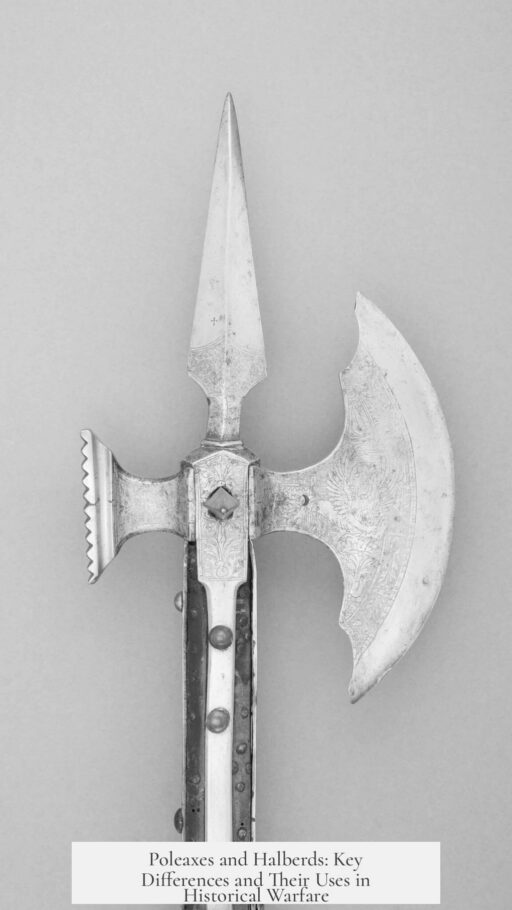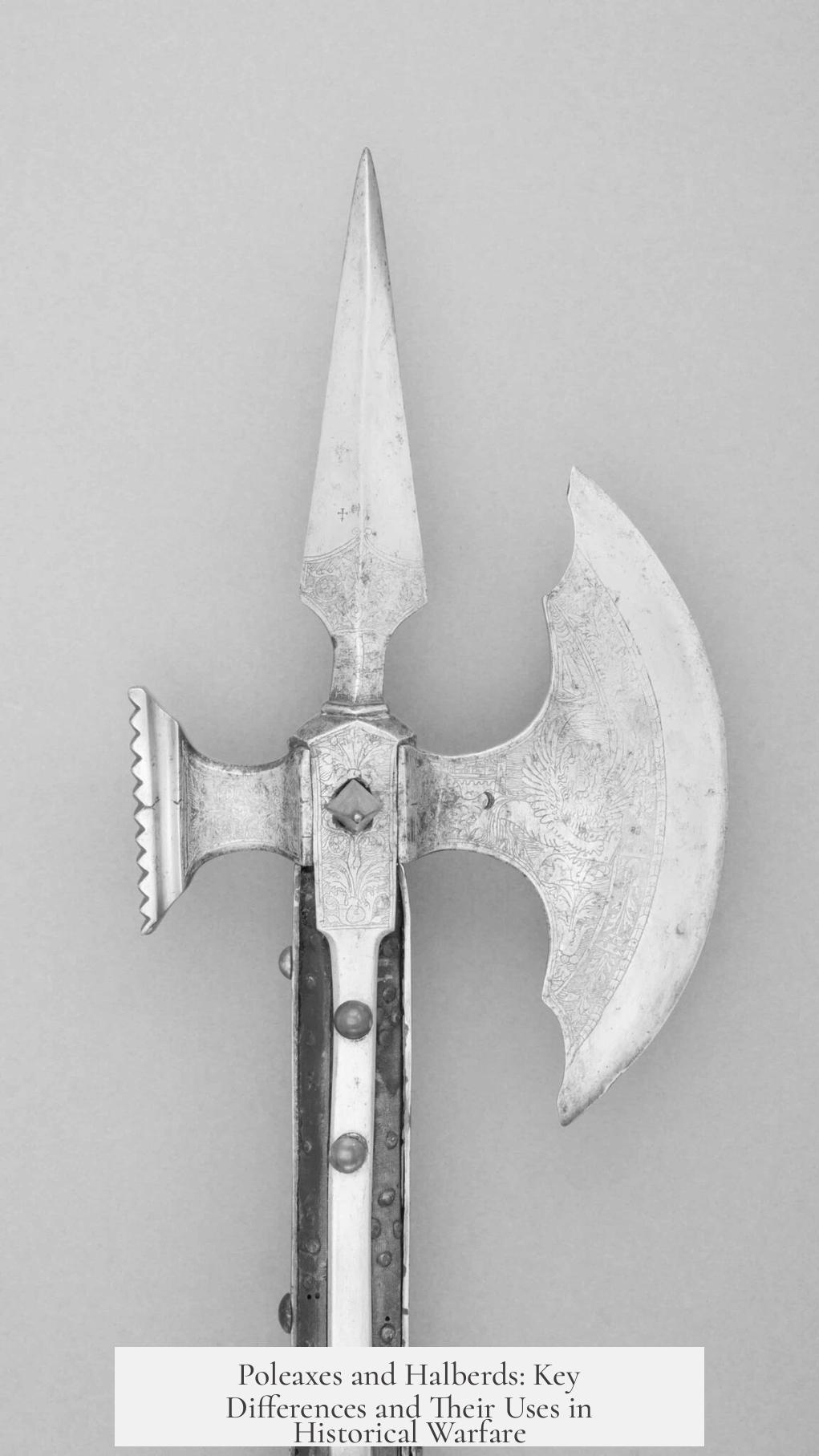Poleaxes and halberds are distinct types of medieval polearms with specific designs and battlefield roles. Both served to counter mounted knights and infantry but differ in structure, use, and historical context. The halberd’s versatility and reach rendered it highly effective compared to other weapons.
A halberd features a head forged from a single piece of steel, combining a broad axe blade, a top spike, and often a rear hook or fluke. Its shaft is long, generally about six feet, allowing reach and leverage. The axe blade typically has a crescent or curved shape, evolved to deliver powerful slashes and thrusts. The top spike is optimized to find gaps in armor, though halberds were less effective against full plate armor. Halberds emerged prominently in the 15th century and were used extensively by infantry units to counter both foot soldiers and heavy cavalry. Their design allowed for slashing, hooking, and thrusting attacks in formation combat, making them valuable well into the early modern period.
The poleaxe contrasts with the halberd through its modular head, which often includes an axe blade, a hammer face, a thickened spike, and metal langets extending down the shaft to reinforce it. The poleaxe’s head components are typically assembled from several parts rather than forged as one piece. Poleaxes vary in length but often are shorter than halberds, designed for close quarters or one-on-one combat. Primarily, poleaxes were weapons of knights and men-at-arms during the 14th to 16th centuries, aimed specifically at fighting other heavily armored foes. The hammer face delivered crushing blows to penetrate or dent plate armor, while spikes targeted plate gaps. Their design balanced cutting, crushing, and piercing capabilities efficiently.
Both weapons aimed to counter plate armor and cavalry charges but served distinct combat styles and social roles. Poleaxes were closely associated with mounted or dismounted men-at-arms, symbolizing status and specialization. Halberds, however, became widespread among infantry, peasants, and mercenaries, reflecting changes in armament production and mass warfare tactics. Halberds were generally longer than their wielders and suited for dense formation fighting, while poleaxes favored versatility in smaller skirmishes or duels.
Comparing advantages, the halberd excels in its multifaceted attack options and superior reach. Its long shaft grants infantry the ability to engage cavalry at a distance. The axe blade can threaten horses’ legs or cut unarmored foes, while the spear-like top spike pierces armor gaps. The rear hook enables dismounting riders effectively. Its single-piece steel head enhances durability in battle.
Halberds also remained practical as plate armor declined during the Renaissance, evolving toward a more blade-focused weapon reflecting infantry’s increased use and changing battlefield dynamics. Halberds were a common weapon in formations alongside pikes, offering combined offensive and anti-cavalry defense capabilities. Their use extended well into the 19th century, demonstrating adaptability beyond the medieval period.
Poleaxes, while highly effective against armored opponents, lost prominence by the late 16th century as infantry warfare shifted and firearms spread. They remained specialized tools for plate-armored combat and gradually gave way to lighter polearms or ranged weapons.
| Aspect | Poleaxe | Halberd |
|---|---|---|
| Head Construction | Modular—axe blade, hammer, spike; interlocking parts | Single forged steel piece—axe blade, spike, rear hook/fluke |
| Shaft Length | Generally shorter; can be carried across body | Longer (~6 feet); often taller than wielder |
| Combat Role | Close-quarters, knightly combat; piercing and crushing armored foes | Mass infantry weapon; thrusting, slashing, hooking; anti-cavalry |
| Social/ Military Use | Knights, men-at-arms; 14th-16th centuries | Common infantry, peasants, mercenaries; 15th-19th centuries |
| Effectiveness | Specialized for heavy armor penetration | Versatile; longer reach; effective against cavalry and unarmored infantry |
Key takeaways:
- Poleaxes feature modular heads with axe, hammer, and spike, designed for armored combat; halberds have one-piece steel heads combining axe blade, spike, and hook.
- Halberds are longer, with greater reach, used primarily by infantry in mass formations to counter cavalry and foot soldiers.
- Poleaxes were weapons of knights and men-at-arms, optimized to fight heavily armored opponents in closer combat.
- The halberd’s versatility—slashing, thrusting, hooking—and long shaft provide advantages over other polearms.
- Halberds remained in use well into the early modern era, adapting to changes in warfare, while poleaxes faded as gunpowder weapons rose.



